Earth and Horses: Day 6
After a very extensive buffet breakfast, Pavel and the 5 of us head out on our last day together to the nearby Grabrok volcano crater. Since injuring my left knee several years ago, going upstairs has been somewhat difficult for me but I do it when important: and now there are innumerable steps to climb up to the rim of the crater and I do it by following slowly behind the others. The difficulty was actually more on top where it was so windy it was difficult to walk along the rocky path and keep balance. As in many places here, there is good infrastructure at tourist spots but often handrails are not available and there are no guard or railings around the crater top, where it is exceptionally uneven ground. From the top, in addition to viewing into the deep curve of the crater with surprising green growth on the fertile sides, we could look over the valley and see so clearly the ox-bow lakes formed by the rivers and streams of the glaciers carved through the lava beds over millennia. Thank you, once again, Mr. Fike, my fabulous 9th grade earth science teacher.

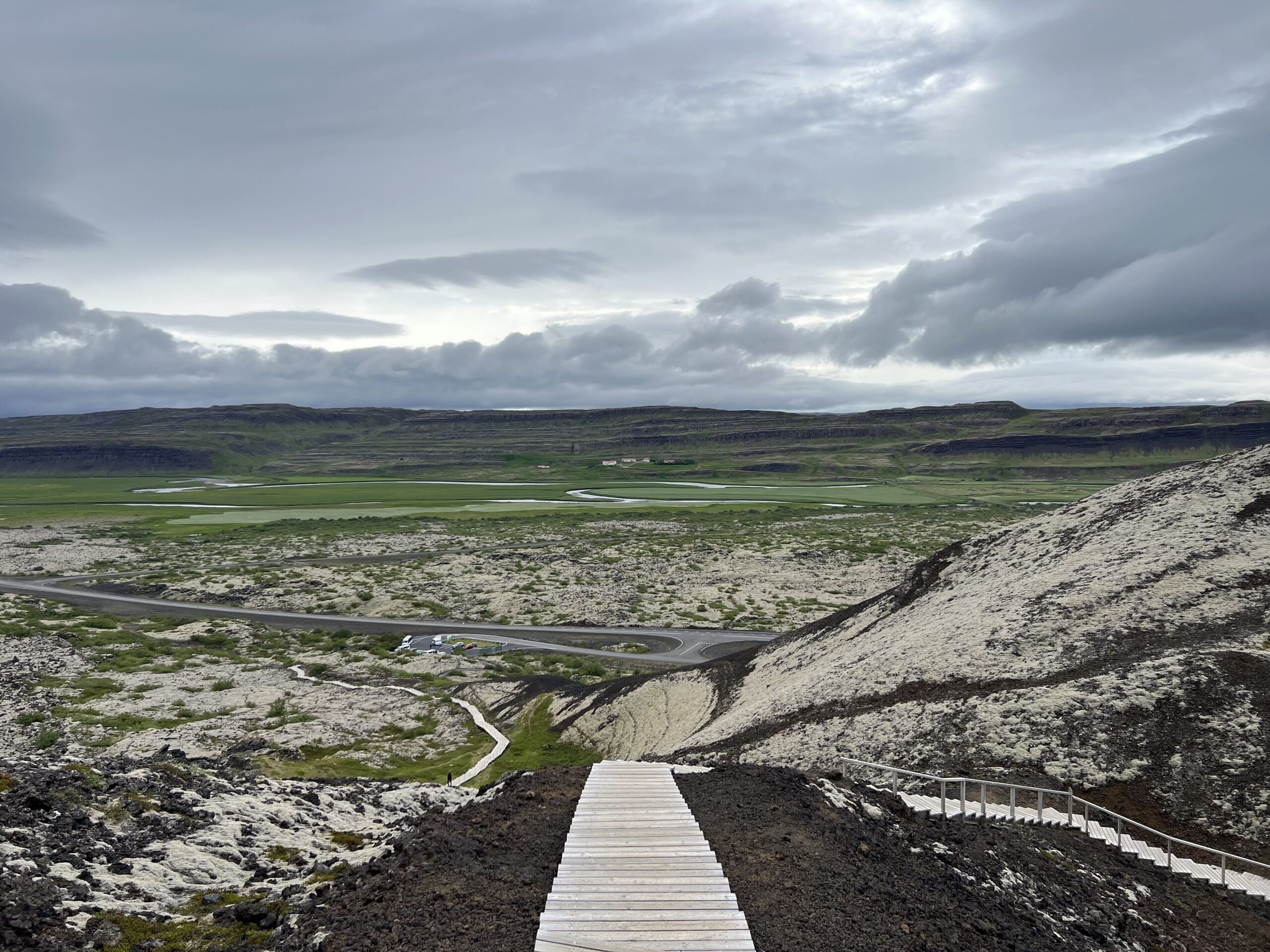
Iceland is in fact one continuous study course of the earth’s movements – not just the underground molten magma flows and magnificent glaciers creating amazing waterfalls — but the midnight sun replacing the beauty of the moon.
There were a number of small earthquakes last night, one at 4:20 am when I was already awake and a few other small tremors. We hear later that it was centered in the South of the island, far from where we are and was felt strongly in Reykjavik. But every movement impacts the whole island so when we visit the Deildatunguhver geothermal springs we are told the wild boiling spouting water is much stronger this morning due to the earthquakes and to stay further away then the existing safety fence. The farmer whose land these waters are on has created hot houses where tomatoes and cucumbers are grown, with the warmth from the water sustaining the plants all year round. There are similar greenhouses all over the island making use of the free geothermal heat to provide what the cold winter can not. The enterprising farmers here also have a stand that sells delicious home made tomato soup for $15/cup with a piece of bread.

About the costs: I was told that about 25% of every sale in the country, even for food, is taxes to support living wages, health care, education and other social programs. A fair tradeoff. So the massive tourist business is a huge boon for the entire nation, not only those working in the tourist trade.
We visit two more connected waterfalls, the Barnafoss and Hraunfossar, each like different flavored ice creams, all delicious in various ways. It takes some agility and nimbleness to manage the rocky steps and paths. My poles don’t really help with the uneven landscape as it feels like I need one hand free at all times to grab onto something if necessary. I can’t keep up with Bill as I am very slow and careful where I step. I saw a tourist getting help for a gashed leg yesterday and It could very easily happen to anyone at any time.
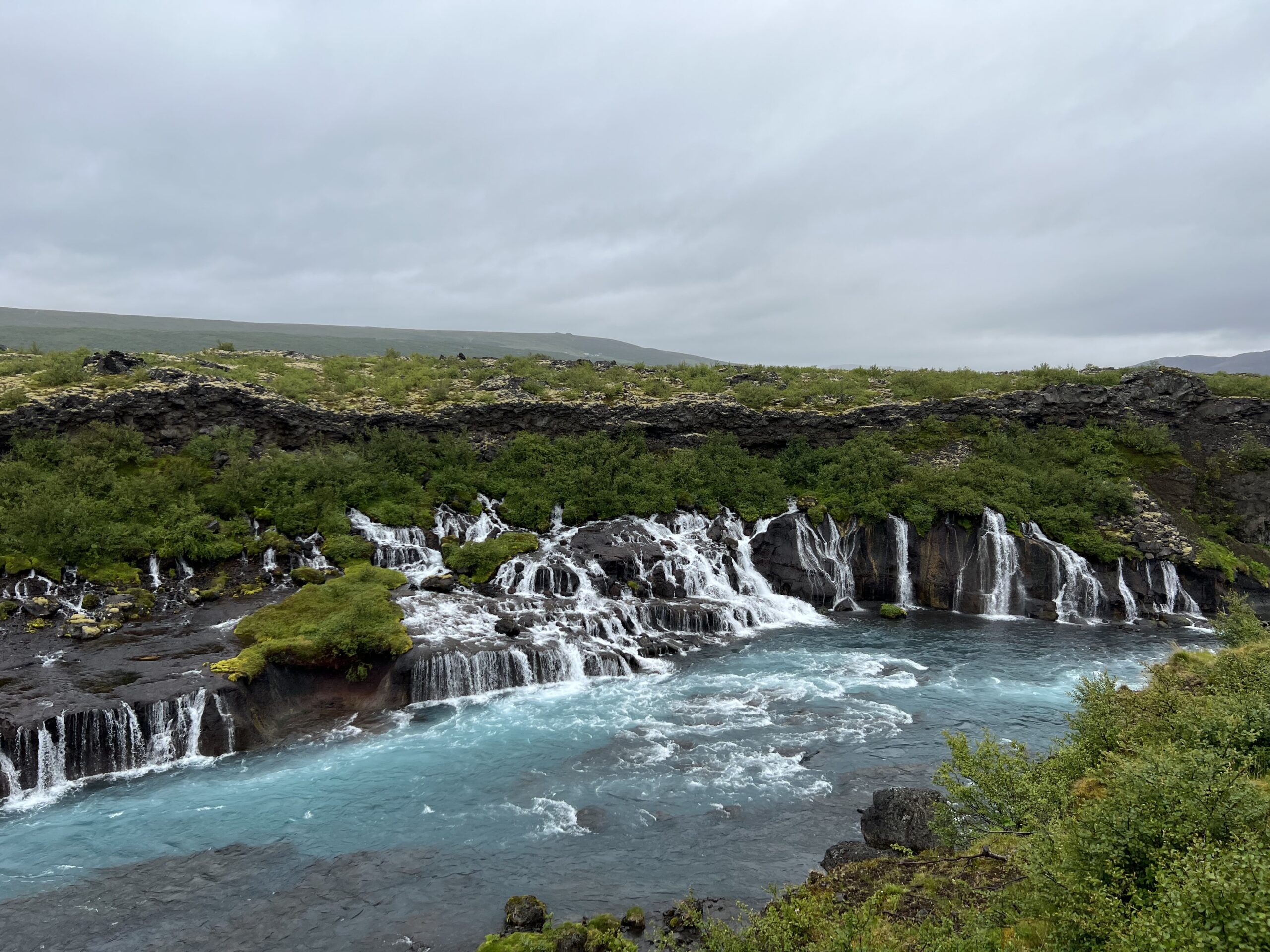
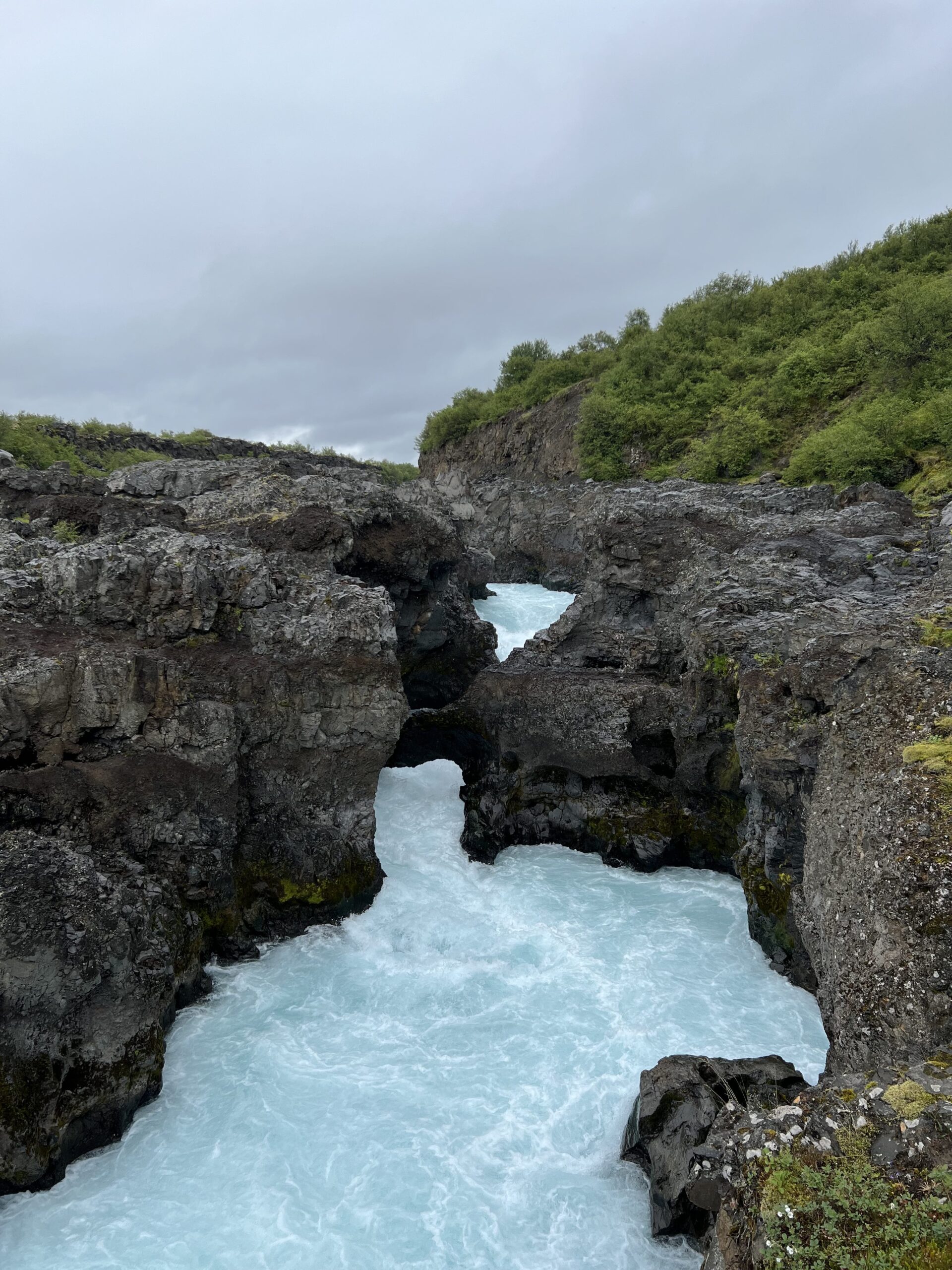
Our last stop is a surprise — the Sturlureykir Icelandic horse farm where we are introduced by a talk and videos to the exceptional differences of Icelandic horses from those in the rest of the world. Bred from a combination of Norse, Mongolian, Arabic and Shetland horses, they are smaller but most remarkable is that they are the only horses with 5 very distinct gaits: walk, trot, canter, tölt, and flying pace. We meet the friendly beautiful horses in two large barns although the horses live outside most of the time, even in the winter cold. This farm survives by providing riding tours for tourists. Icelandic horses that are taken outside the country can never return to avoid import of a disease so those raised and trained here can not compete in international competitions although they are exported and sold around the world.
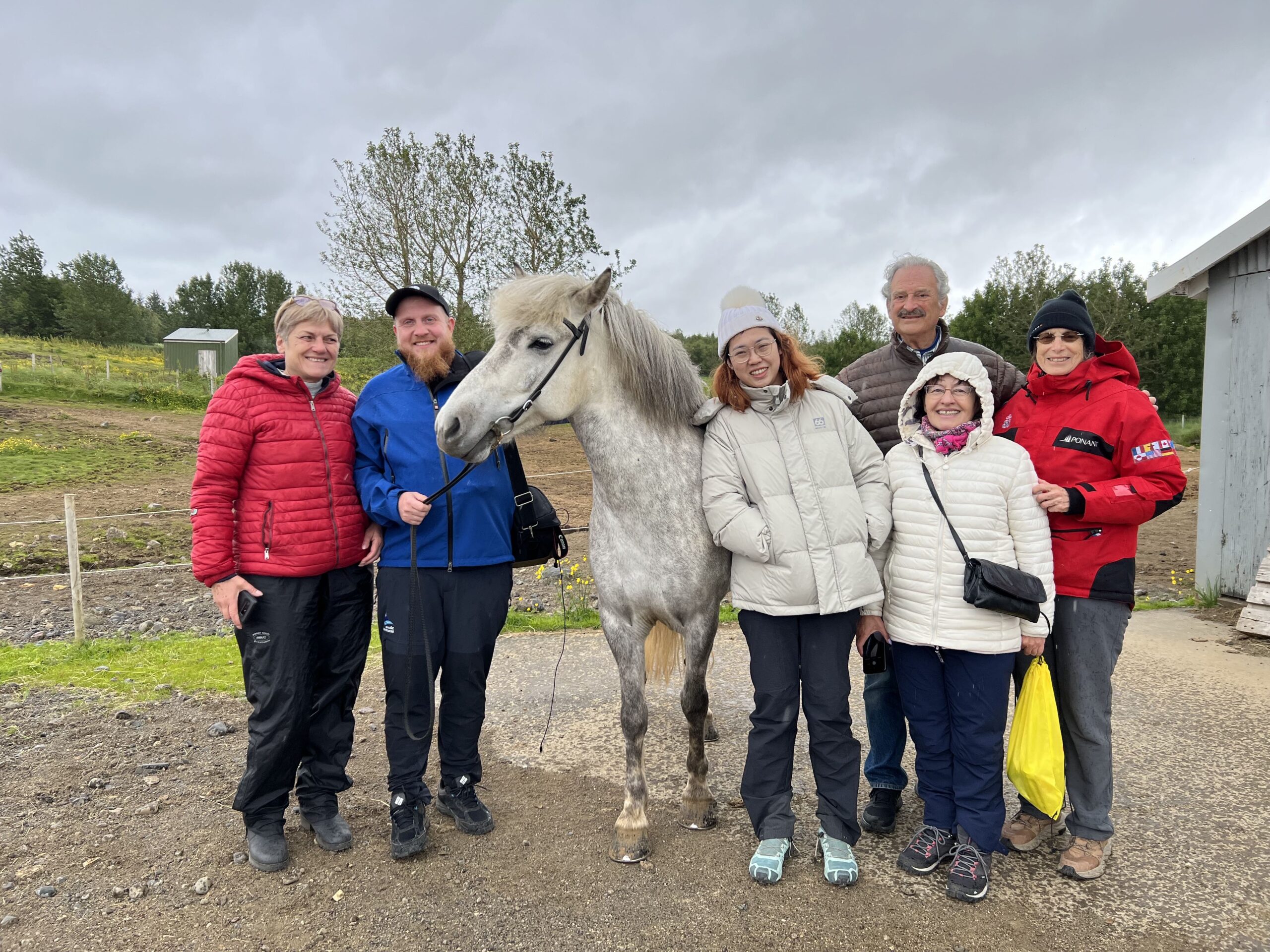
Bill, the two Bulgarian women, and I are dropped off in the small city of Borganes, partway to Reykjavik, to join another tour the next day. We walk around the town, visiting its harbor area (some industrial buildings and a long empty dock), some well maintained sports fields near the river and a primary school, a church high on a hill, and unexpectedly a very odd museum. Sophie’s toy museum in a very small 2 story hut unlocked and open to the public. In it are a large collection of toys from the last 100 years, including many from my own childhood and even some from that of my children’s. It is run on an honor system and could probably exist few other places in the world.
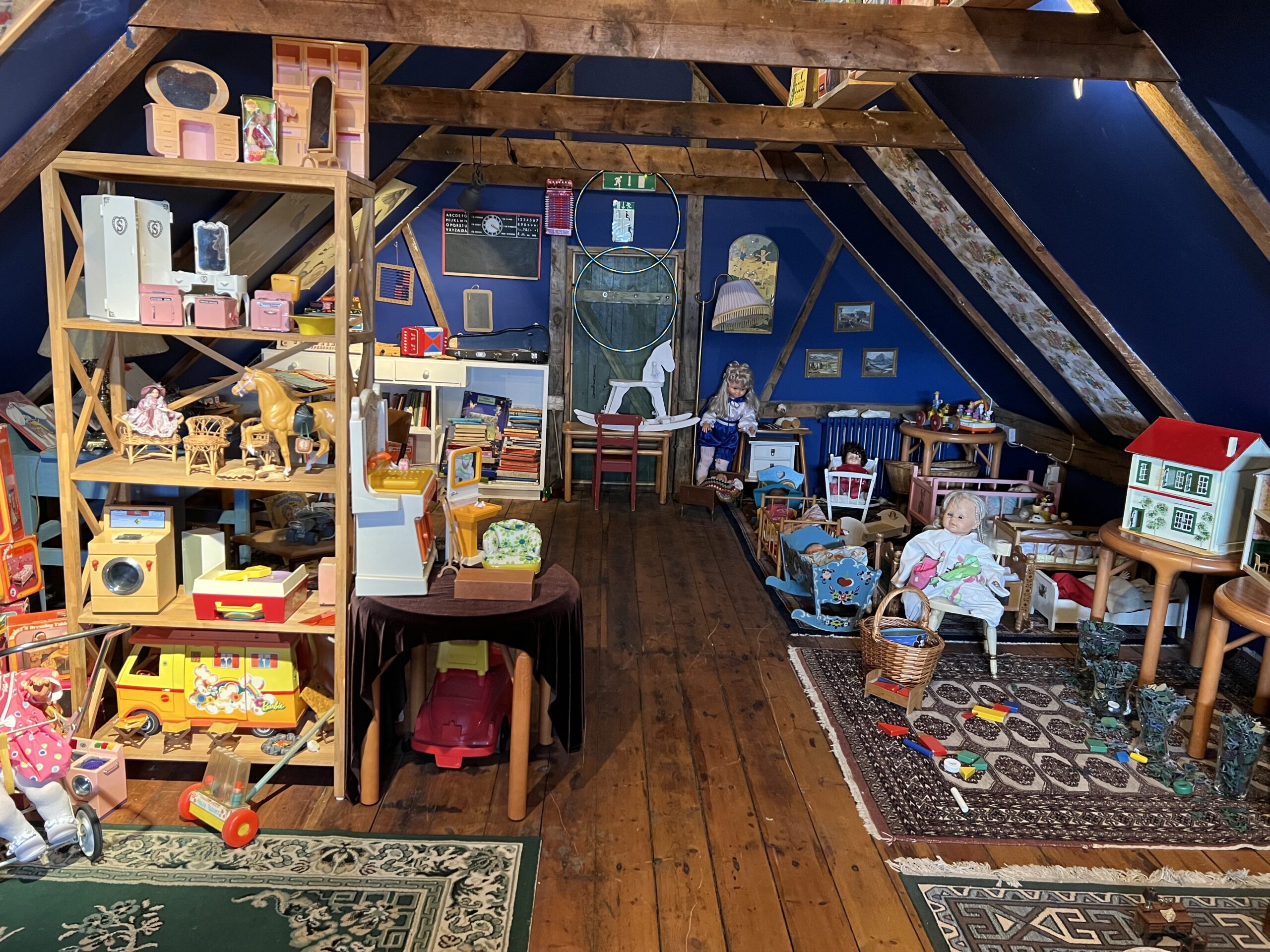
Bill and I have an excellent dinner at a local restaurant with a view onto the sea and await the additional tour tomorrow.
Snaefellsnes Coasta & Villages: Day 7
We are now in a new minibus with a new driver/guide named Willy (not his Icelandic name which was too hard to pronounce) and 10 other people. We are going to spend the day exploring the Snaefellsnes Peninsula, described as having all the beautiful aspects of Iceland in one place. The best thing of this change is that Willy provides us in one day a significant amount of information about Icelandic History and way of life that we had not gotten before.
Our tour begins at a beautiful beach where large seals lounge on the rocks. That is followed by a stop at a very old church reflecting both the austere backdrop and the no-frills lutheran structure.
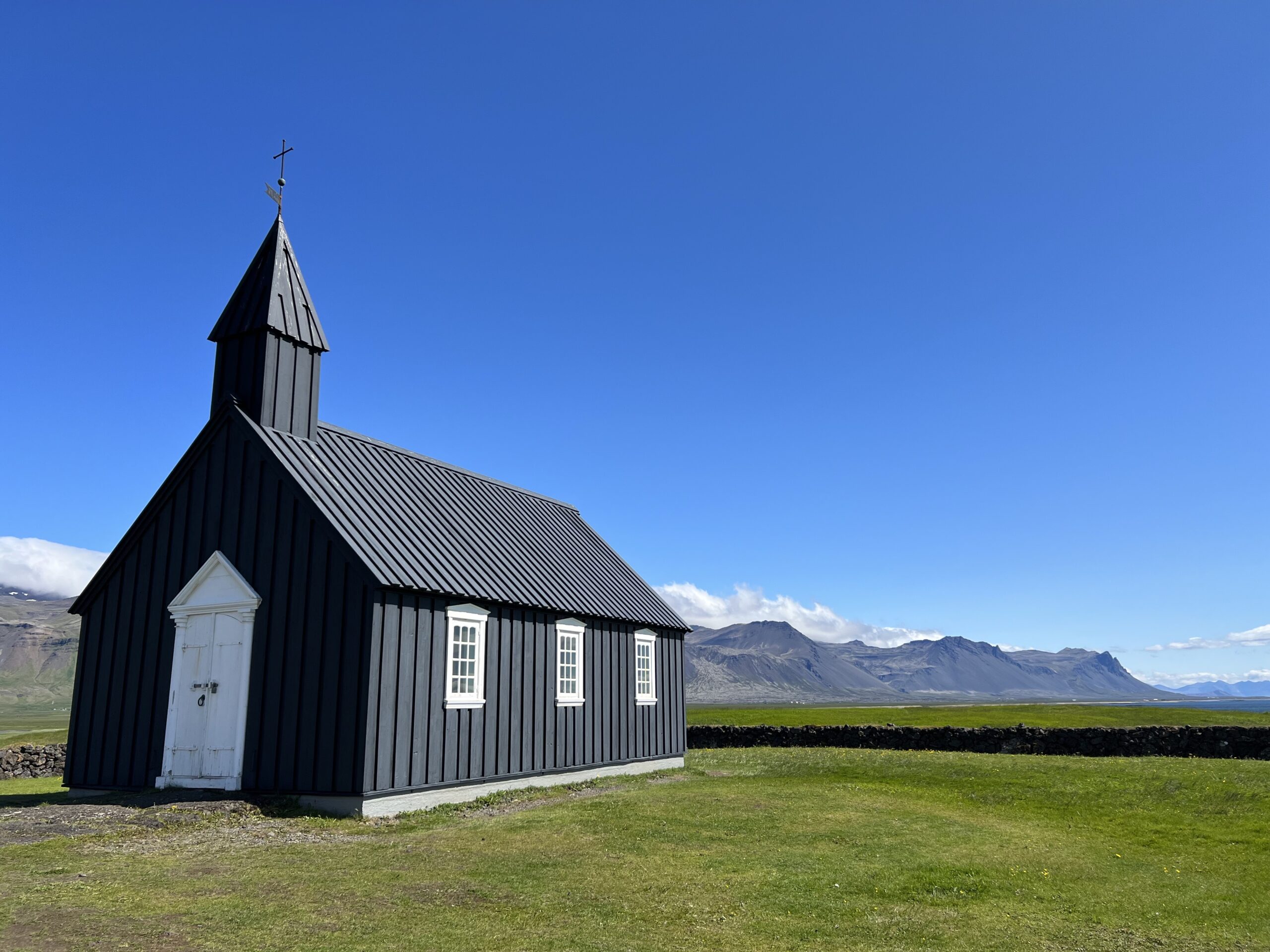
At another cove, we walk along the top of the cliffs with both a large numbers of arctic terns, whom we dare not disturb as they are known here for diving and pecking the heads of their perceived enemies (I know that well from our earlier encounter with them in Norway) and even larger number of sea gulls nesting in the crevices of the rocky cliffs along the shore. The sightlines out across the water are beautiful and Bill remarks that there are strangely no white caps on the waves lapping the coast due to the calm waters.

Then on to unpronounceable Djupalonssandur where a ship was wrecked in WWII and its remains are still visible on the black sand beach. We stop at the town to Arnastapi for a break as we circle around the remains of the glacier which once covered this whole region. Basically, the whole area is extremely scenic so wherever you look is interesting.
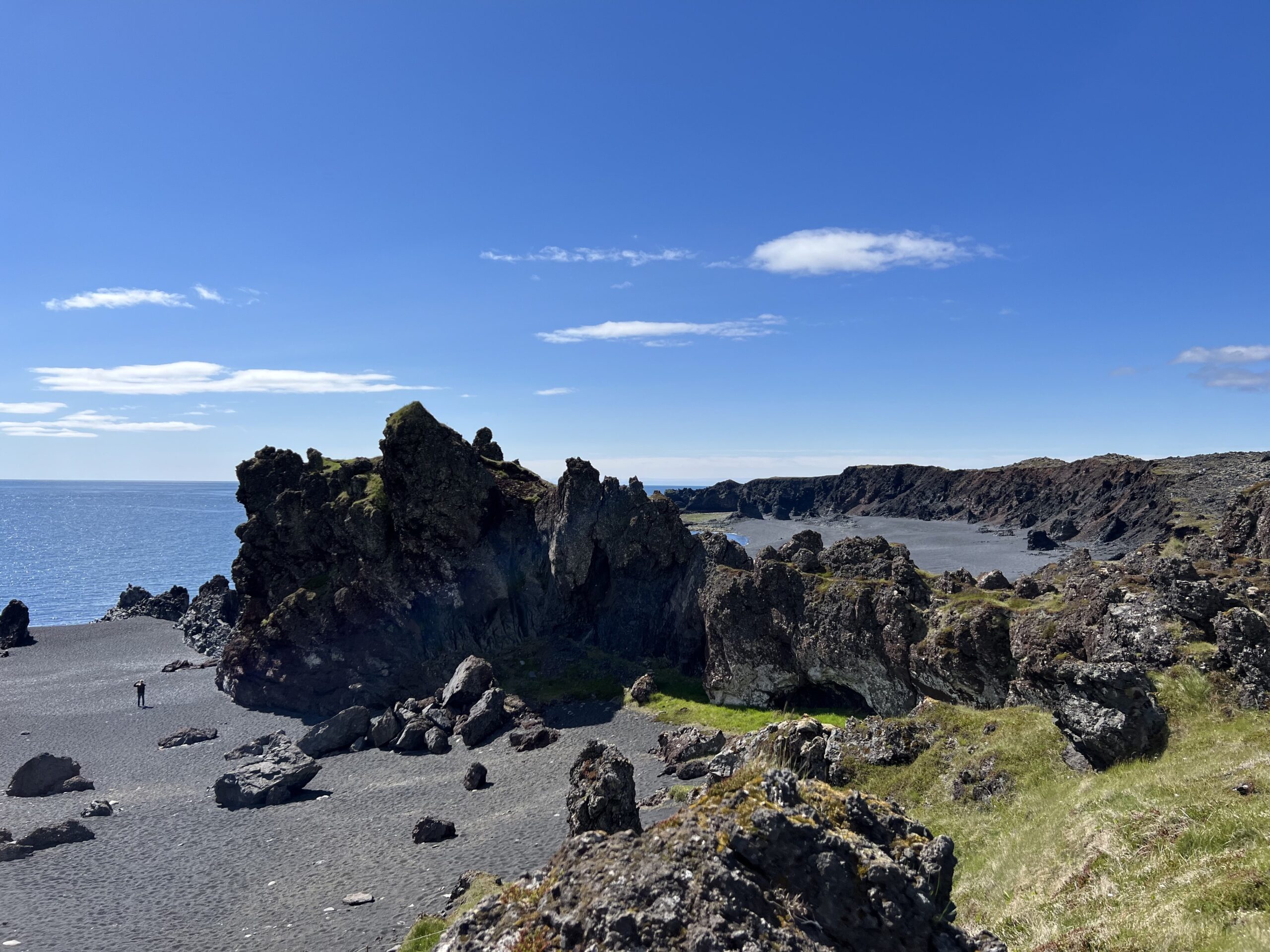
Our guide takes us to the famous site of a mountain that looks like a church and so is called Kirkjufell referencing the church-like structure and the waterfall beneath it.
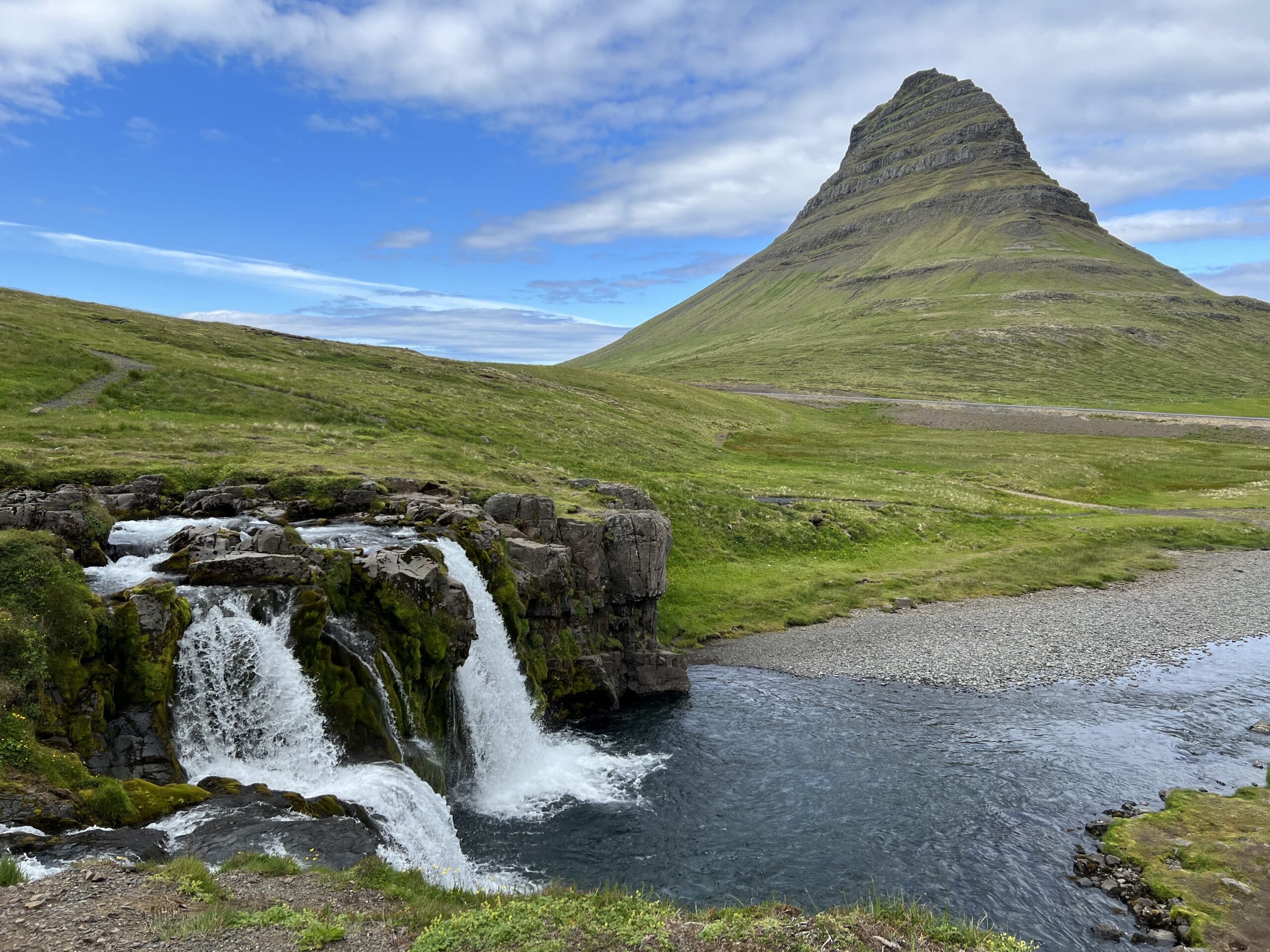
And then back to Reykjavik for our last few days. It has been wonderful dawdling in this beautiful land so distant from our usual lives.
